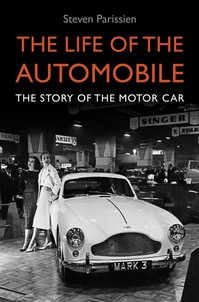(p. C5) . . . , much more so than in earlier books on Intel and its principals, the embedded thread of “The Intel Trinity” is the dirty little secret few people outside of Intel knew: Andy Grove really didn’t like Bob Noyce.
. . .
(p. C6) . . . there’s the argument that one thing a startup needs is an inspiring, swashbuckling boss who lights up a room when he enters it and has the confidence to make anything he’s selling seem much bigger and more important than it actually is. And Mr. Malone makes a compelling case that Noyce was the right man for the job in this phase of the company. “Bob Noyce’s greatest gift, even more than his talent as a technical visionary,” Mr. Malone writes, “was his ability to inspire people to believe in his dreams, in their own abilities, and to follow him on the greatest adventure of their professional lives.”
. . .
Noyce hid from Mr. Grove, who was in charge of operations, the fact that Intel had a secret skunk works developing a microprocessor, a single general-purpose chip that would perform multiple functions–logic, calculation, memory and power control. Noyce had the man who was running it report directly to him rather than to Mr. Grove, even though Mr. Grove was his boss on the organizational chart. When Mr. Grove learned what was going on, he became furious, but like the good soldier he was, he snapped to attention and helped recruit a young engineer from Fairchild to be in charge of the project, which ultimately redefined the company.
. . .
Remarkably, none of this discord seemed to have much effect on the company’s day-to-day operations. Mr. Malone even suggests that the dysfunction empowered Intel’s take-no-prisoners warrior culture.
. . .
So while the humble, self-effacing Mr. Moore, who had his own time in the CEO’s chair from 1975 to 1987, played out his role as Intel’s big thinker, the brilliant visionary “who could see into the technological future better than anyone alive,” Mr. Grove was the kick-ass enforcer. No excuses. For anything.
For the full review, see:
STEWART PINKERTON. “Made in America; A Born Leader, a Frustrated Martinet Built One of Silicon Valley’s Giants.” The Wall Street Journal (Sat., July 19, 2014): C5-C6.
(Note: ellipses added.)
(Note: the online version of the review has the date July 18, 2014, and has the title “Book Review: ‘The Intel Trinity’ by Michael S. Malone; A born leader, an ethereal genius and a tough taskmaster built the most important company on the planet.”)
The book under review is:
Malone, Michael S. The Intel Trinity: How Robert Noyce, Gordon Moore, and Andy Grove Built the World’s Most Important Company. New York: HarperCollins Publishers, 2014.



